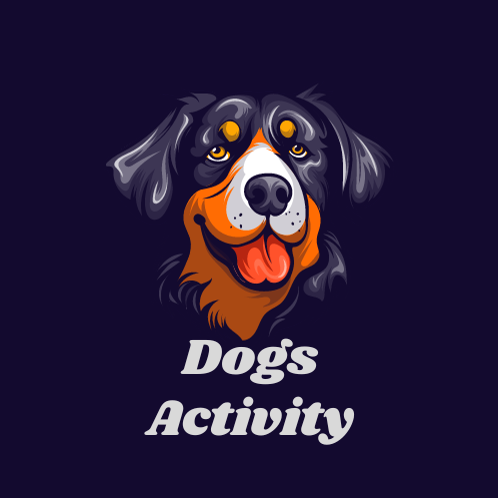
Introduction:
The bond between humans and dogs is unparalleled, with our four-legged friends becoming integral members of our families. Ensuring the health and well-being of our canine companions is a top priority, and a crucial aspect of their care is providing a balanced and appropriate diet. One common question that dog owners often grapple with is, “How many cups of food should I feed my dog?” In this comprehensive guide, we’ll navigate the intricacies of canine nutrition, exploring factors that influence feeding requirements and offering practical insights to help you determine the right amount of food for your furry friend.
Understanding Canine Nutrition:
Before diving into the specifics of portion sizes, it’s essential to have a foundational understanding of canine nutrition. Dogs, like humans, require a balanced diet that includes essential nutrients to support their growth, energy levels, and overall health. The key components of a dog’s diet include:
- Protein: Essential for muscle development, repair, and overall cellular function. Common protein sources in dog food include meat, poultry, fish, and plant-based proteins.
- Fats: Provide a concentrated source of energy and support various bodily functions. Healthy fats, such as those from animal fat and plant oils, contribute to coat health, joint function, and overall vitality.
- Carbohydrates: Serve as a source of energy and can come from grains, vegetables, and legumes. While dogs are primarily carnivores, carbohydrates play a role in providing sustained energy.
- Vitamins and Minerals: Essential for overall health, vitamins and minerals support various physiological functions, including bone health, immune function, and the maintenance of a healthy coat.
- Water: Often overlooked but crucial, water is vital for digestion, temperature regulation, and overall hydration. Ensure that your dog has constant access to clean and fresh water.
Factors Influencing Feeding Requirements:
The amount of food a dog needs can vary based on several factors, and understanding these variables is crucial for tailoring their diet to meet individual needs. Consider the following factors when determining how much to feed your dog:
- Breed and Size: Larger breeds generally require more food than smaller breeds. A Great Dane, for example, will have significantly different feeding requirements than a Chihuahua.
- Age: Puppies, adult dogs, and seniors have different nutritional needs. Puppies require more calories for growth, while seniors may benefit from a diet that supports joint health and weight management.
- Activity Level: A highly active dog, such as a working or sporting breed, will need more calories than a sedentary dog. Consider your dog’s daily activity level when determining portion sizes.
- Metabolism: Individual dogs may have variations in metabolism. Some dogs may have a naturally faster metabolism, requiring more calories to maintain a healthy weight.
- Health Conditions: Certain health conditions, such as obesity, diabetes, or allergies, may necessitate specific dietary adjustments. Consult with a veterinarian to determine the best diet for dogs with special health considerations.
- Spaying/Neutering: Altered dogs may have different metabolic needs. Spaying or neutering can impact a dog’s metabolism, so adjust their diet accordingly to prevent weight gain.
Calculating Daily Caloric Requirements:
To determine how many cups of food to feed your dog, you’ll first need to calculate their daily caloric requirements. The following formula can serve as a starting point:
DailyCalories=RestingEnergyRequirement(RER)×Multiplier
The Resting Energy Requirement (RER) can be calculated using the following formula:
RER=70×(Weight in kg)0.75
Once you have the RER, you’ll multiply it by a specific multiplier based on your dog’s activity level:
- Sedentary (little to no exercise): RER \times 1.2
- Lightly active (light exercise/sports 1-3 days/week): RER \times 1.375
- Moderately active (moderate exercise/sports 3-5 days/week): RER \times 1.5
- Very active (hard exercise/sports 6-7 days a week): RER \times 1.725
- Extremely active (very hard exercise/sports & physical job or 2x training): RER \times 1.9
This will give you an estimate of your dog’s daily caloric requirements, and you can then use this information to determine the appropriate amount of food.
Choosing the Right Dog Food:
Selecting a high-quality dog food is fundamental to meeting your dog’s nutritional needs. Consider the following tips when choosing the right dog food:
- Check the Ingredients List: Look for a dog food with real meat as the primary ingredient. Avoid foods with excessive fillers, artificial additives, and by-products.
- Consider Your Dog’s Age and Life Stage: Puppies, adults, and seniors have different nutritional requirements. Choose a dog food formulated for your dog’s specific life stage.
- Account for Special Dietary Needs: Some dogs may have allergies, sensitivities, or specific health conditions that require special dietary considerations. Consult with a veterinarian to address any specific dietary needs.
- Look for Complete and Balanced Formulas: Ensure that the dog food is labeled as “complete and balanced.” This indicates that the food meets the nutritional standards set by organizations like the Association of American Feed Control Officials (AAFCO).
- Avoid Overfeeding: Follow the feeding guidelines provided on the dog food packaging. Overfeeding can lead to obesity and related health issues.
Common Feeding Mistakes to Avoid:
To ensure your dog maintains optimal health, avoid these common feeding mistakes:
- Free-Feeding: Leaving food out for your dog to eat at their leisure can contribute to overeating and obesity. Establish a regular feeding schedule.
- Ignoring Changes in Weight: Monitor your dog’s weight regularly. Sudden weight gain or loss may indicate an issue with their diet or health.
- Inconsistent Feeding Times: Dogs thrive on routine. Establish consistent feeding times to help regulate their metabolism and digestion.
- Feeding Table Scraps: While it may be tempting to share human food with your dog, many human foods can be harmful to them. Stick to a well-balanced dog diet.
- Inadequate Hydration: Ensure your dog has access to clean and fresh water at all times. Dehydration can lead to health issues and affect their overall well-being.
How Many Cups of Food Should I Feed My Dog?
Now that we’ve covered the foundational aspects of canine nutrition, let’s address the question at the heart of this guide: “How many cups of food should I feed my dog?” Keep in mind that the exact amount can vary based on factors like age, size, and activity level. Here’s a general guide to help you determine the appropriate portion size for your dog:
- Small Breeds (Up to 20 lbs):
- Puppies: 1/2 to 1 cup of high-quality puppy food, divided into 3-4 meals per day.
- Adults: 1/4 to 3/4 cup of high-quality dog food, twice a day.
- Medium Breeds (20-50 lbs):
- Puppies: 1 to 2 cups of high-quality puppy food, divided into 3-4 meals per day.
- Adults: 3/4 to 1.5 cups of high-quality dog food, twice a day.
- Large Breeds (50-100 lbs):
- Puppies: 2 to 4 cups of high-quality puppy food, divided into 3-4 meals per day.
- Adults: 1.5 to 3 cups of high-quality dog food, twice a day.
- Giant Breeds (100 lbs and above):
- Puppies: 4 to 8 cups of high-quality puppy food, divided into 3-4 meals per day.
- Adults: 3 to 6 cups of high-quality dog food, twice a day.
Remember, these are general guidelines, and it’s essential to monitor your dog’s weight, adjust portions based on their individual needs, and consult with a veterinarian for personalized advice.
Common Feeding Patterns for Different Life Stages:
- Puppies (Up to 6 Months):
- Puppies require more frequent meals to support their rapid growth and development.
- Divide their daily portion into 3-4 meals to ensure they receive a consistent supply of nutrients throughout the day.
- Gradually transition from puppy food to adult food based on your veterinarian’s recommendations.
- Adults (6 Months to 6 Years):
- Most adult dogs thrive on two meals per day.
- Feed once in the morning and once in the evening to establish a consistent routine.
- Adjust portion sizes based on activity level and weight management goals.
- Seniors (6 Years and Older):
- Senior dogs may benefit from a diet tailored to their changing nutritional needs.
- Monitor their weight and adjust portion sizes to accommodate changes in metabolism.
- Consider senior-specific dog food formulations that support joint health and overall well-being.
Homemade Dog Food Considerations:
Some dog owners prefer preparing homemade meals for their dogs, offering greater control over ingredients. If you choose to go this route, work with a veterinarian or canine nutritionist to ensure your homemade dog food meets all of your dog’s nutritional requirements. Consider the following when preparing homemade dog food:
- Balanced Nutrition: Homemade meals should include a balance of protein, carbohydrates, fats, and essential vitamins and minerals.
- Protein Sources: Include lean protein sources such as poultry, beef, fish, and eggs.
- Carbohydrates: Incorporate whole grains, vegetables, and legumes for a source of energy and fiber.
- Healthy Fats: Include sources of healthy fats, such as olive oil or fish oil, to support coat health and overall well-being.
- Calcium and Phosphorus: Ensure an appropriate balance of calcium and phosphorus, crucial for bone health.
- Avoid Harmful Ingredients: Certain foods, such as onions, garlic, chocolate, and grapes, can be toxic to dogs. Avoid including these in homemade meals.
- Supplementation: Depending on the ingredients used, your dog may need additional supplementation. Consult with a professional to determine if any supplements are necessary.
Conclusion:
Determining how many cups of food to feed your dog involves a combination of understanding their individual needs, selecting the right dog food, and monitoring their weight and overall health. A well-balanced diet contributes not only to your dog’s physical health but also to their mental well-being and overall happiness.
As a responsible dog owner, invest time in researching and selecting high-quality dog food that aligns with your dog’s specific requirements. Regular veterinary check-ups, coupled with attentive monitoring of your dog’s weight and behavior, will ensure that you can make informed adjustments to their diet as needed.
Remember, the journey of nourishing your dog is a dynamic and ongoing process. By staying attuned to their unique needs and providing them with the care they deserve, you’re not just a pet owner – you’re a guardian, companion, and provider of a life filled with health, vitality, and the joy that comes from a well-fed and content canine friend.



